Test: Reading Comprehension - 2 - Class 10 MCQ
30 Questions MCQ Test English Grammar Advanced - Test: Reading Comprehension - 2
Read the passage carefully:
1. Climate change is one of the biggest global problems and almost every country is affected by it. The main cause of climate change is the emission of greenhouse gases such as carbon dioxide. The concentration of carbon dioxide has increased mainly due to the burning of fossil fuels like oil and coal. The average temperature of the earth has risen by more than 1° Celsius as compared to the pre-industrial era, 2016 being the warmest year recorded. This has caused the shrinkage of snow cover in mountains like the Alps, Himalayas, Andes, Rockies, Alaska and Africa. NASA’s experiments have shown a massive loss of ice cover in Greenland and Antarctica. Particularly Greenland has lost approximately 286 billion tons of ice per year since 1993. In the last century, the seawater level has raised by almost 20 centimetres. As oceans absorb carbon dioxide from the atmosphere, its pH level decreases. This phenomenon is called ocean acidification. It is affecting the coral reef ecosystem. Climate change has caused erratic precipitation patterns all over the world.
2. Reducing the emission of greenhouse gases can limit climate change. This can be achieved by reducing consumption of fossil fuels and incorporating renewable resources such as solar energy, hydropower, wind energy, etc., for power generation. Climate change will require modification of key services and infrastructure. Climate action can derive economic benefits to the tune of 26 trillion and generate more than 18 million jobs in the sustainable energy sector alone by 2030.
3. The Government of India launched the National Action Plan on Climate Change on 30th June 2008; focusing on solar power, sustainable agriculture, energy efficiency, water, etc. The Government has set a target of producing 100 GW of solar capacity by 2022. This will abate nearly 190 million tons of CO2 over its life cycle. More such steps, such as the development of public transportation are needed to be taken up by the government.
On the basis of your reading of the passage given above, answer of the following questions:
Q. What is the message conveyed in the second paragraph?
2. Reducing the emission of greenhouse gases can limit climate change. This can be achieved by reducing consumption of fossil fuels and incorporating renewable resources such as solar energy, hydropower, wind energy, etc., for power generation. Climate change will require modification of key services and infrastructure. Climate action can derive economic benefits to the tune of 26 trillion and generate more than 18 million jobs in the sustainable energy sector alone by 2030.
3. The Government of India launched the National Action Plan on Climate Change on 30th June 2008; focusing on solar power, sustainable agriculture, energy efficiency, water, etc. The Government has set a target of producing 100 GW of solar capacity by 2022. This will abate nearly 190 million tons of CO2 over its life cycle. More such steps, such as the development of public transportation are needed to be taken up by the government.
On the basis of your reading of the passage given above, answer of the following questions:
Read the passage carefully:
1. Climate change is one of the biggest global problems and almost every country is affected by it. The main cause of climate change is the emission of greenhouse gases such as carbon dioxide. The concentration of carbon dioxide has increased mainly due to the burning of fossil fuels like oil and coal. The average temperature of the earth has risen by more than 1° Celsius as compared to the pre-industrial era, 2016 being the warmest year recorded. This has caused the shrinkage of snow cover in mountains like the Alps, Himalayas, Andes, Rockies, Alaska and Africa. NASA’s experiments have shown a massive loss of ice cover in Greenland and Antarctica. Particularly Greenland has lost approximately 286 billion tons of ice per year since 1993. In the last century, the seawater level has raised by almost 20 centimetres. As oceans absorb carbon dioxide from the atmosphere, its pH level decreases. This phenomenon is called ocean acidification. It is affecting the coral reef ecosystem. Climate change has caused erratic precipitation patterns all over the world.
2. Reducing the emission of greenhouse gases can limit climate change. This can be achieved by reducing consumption of fossil fuels and incorporating renewable resources such as solar energy, hydropower, wind energy, etc., for power generation. Climate change will require modification of key services and infrastructure. Climate action can derive economic benefits to the tune of 26 trillion and generate more than 18 million jobs in the sustainable energy sector alone by 2030.
3. The Government of India launched the National Action Plan on Climate Change on 30th June 2008; focusing on solar power, sustainable agriculture, energy efficiency, water, etc. The Government has set a target of producing 100 GW of solar capacity by 2022. This will abate nearly 190 million tons of CO2 over its life cycle. More such steps, such as the development of public transportation are needed to be taken up by the government.
On the basis of your reading of the passage given above, answer of the following questions:
Q. Choose the option that best captures the central idea of the passage from the given quotes.
1. “Stopping climate change will make us richer than doing nothing.” — James Shaw
2. “Although the magnitude of climate change may make individuals feel helpless, individual action is critical for meaningful change.” — Mia Armstrong
3. “Climate change will test our intelligence, our compassion and our will. But we are equal to that challenge.” — Justin Trudeau
4. All of these
2. Reducing the emission of greenhouse gases can limit climate change. This can be achieved by reducing consumption of fossil fuels and incorporating renewable resources such as solar energy, hydropower, wind energy, etc., for power generation. Climate change will require modification of key services and infrastructure. Climate action can derive economic benefits to the tune of 26 trillion and generate more than 18 million jobs in the sustainable energy sector alone by 2030.
3. The Government of India launched the National Action Plan on Climate Change on 30th June 2008; focusing on solar power, sustainable agriculture, energy efficiency, water, etc. The Government has set a target of producing 100 GW of solar capacity by 2022. This will abate nearly 190 million tons of CO2 over its life cycle. More such steps, such as the development of public transportation are needed to be taken up by the government.
On the basis of your reading of the passage given above, answer of the following questions:
1. “Stopping climate change will make us richer than doing nothing.” — James Shaw
2. “Although the magnitude of climate change may make individuals feel helpless, individual action is critical for meaningful change.” — Mia Armstrong
3. “Climate change will test our intelligence, our compassion and our will. But we are equal to that challenge.” — Justin Trudeau
4. All of these
| 1 Crore+ students have signed up on EduRev. Have you? Download the App |
Read the passage carefully:
1. Climate change is one of the biggest global problems and almost every country is affected by it. The main cause of climate change is the emission of greenhouse gases such as carbon dioxide. The concentration of carbon dioxide has increased mainly due to the burning of fossil fuels like oil and coal. The average temperature of the earth has risen by more than 1° Celsius as compared to the pre-industrial era, 2016 being the warmest year recorded. This has caused the shrinkage of snow cover in mountains like the Alps, Himalayas, Andes, Rockies, Alaska and Africa. NASA’s experiments have shown a massive loss of ice cover in Greenland and Antarctica. Particularly Greenland has lost approximately 286 billion tons of ice per year since 1993. In the last century, the seawater level has raised by almost 20 centimetres. As oceans absorb carbon dioxide from the atmosphere, its pH level decreases. This phenomenon is called ocean acidification. It is affecting the coral reef ecosystem. Climate change has caused erratic precipitation patterns all over the world.
2. Reducing the emission of greenhouse gases can limit climate change. This can be achieved by reducing consumption of fossil fuels and incorporating renewable resources such as solar energy, hydropower, wind energy, etc., for power generation. Climate change will require modification of key services and infrastructure. Climate action can derive economic benefits to the tune of 26 trillion and generate more than 18 million jobs in the sustainable energy sector alone by 2030.
3. The Government of India launched the National Action Plan on Climate Change on 30th June 2008; focusing on solar power, sustainable agriculture, energy efficiency, water, etc. The Government has set a target of producing 100 GW of solar capacity by 2022. This will abate nearly 190 million tons of CO2 over its life cycle. More such steps, such as the development of public transportation are needed to be taken up by the government.
On the basis of your reading of the passage given above, answer of the following questions:
Q. Emission of greenhouse gases causes which of the following phenomenon?
2. Reducing the emission of greenhouse gases can limit climate change. This can be achieved by reducing consumption of fossil fuels and incorporating renewable resources such as solar energy, hydropower, wind energy, etc., for power generation. Climate change will require modification of key services and infrastructure. Climate action can derive economic benefits to the tune of 26 trillion and generate more than 18 million jobs in the sustainable energy sector alone by 2030.
3. The Government of India launched the National Action Plan on Climate Change on 30th June 2008; focusing on solar power, sustainable agriculture, energy efficiency, water, etc. The Government has set a target of producing 100 GW of solar capacity by 2022. This will abate nearly 190 million tons of CO2 over its life cycle. More such steps, such as the development of public transportation are needed to be taken up by the government.
On the basis of your reading of the passage given above, answer of the following questions:
Read the passage carefully:
1. Climate change is one of the biggest global problems and almost every country is affected by it. The main cause of climate change is the emission of greenhouse gases such as carbon dioxide. The concentration of carbon dioxide has increased mainly due to the burning of fossil fuels like oil and coal. The average temperature of the earth has risen by more than 1° Celsius as compared to the pre-industrial era, 2016 being the warmest year recorded. This has caused the shrinkage of snow cover in mountains like the Alps, Himalayas, Andes, Rockies, Alaska and Africa. NASA’s experiments have shown a massive loss of ice cover in Greenland and Antarctica. Particularly Greenland has lost approximately 286 billion tons of ice per year since 1993. In the last century, the seawater level has raised by almost 20 centimetres. As oceans absorb carbon dioxide from the atmosphere, its pH level decreases. This phenomenon is called ocean acidification. It is affecting the coral reef ecosystem. Climate change has caused erratic precipitation patterns all over the world.
2. Reducing the emission of greenhouse gases can limit climate change. This can be achieved by reducing consumption of fossil fuels and incorporating renewable resources such as solar energy, hydropower, wind energy, etc., for power generation. Climate change will require modification of key services and infrastructure. Climate action can derive economic benefits to the tune of 26 trillion and generate more than 18 million jobs in the sustainable energy sector alone by 2030.
3. The Government of India launched the National Action Plan on Climate Change on 30th June 2008; focusing on solar power, sustainable agriculture, energy efficiency, water, etc. The Government has set a target of producing 100 GW of solar capacity by 2022. This will abate nearly 190 million tons of CO2 over its life cycle. More such steps, such as the development of public transportation are needed to be taken up by the government.
On the basis of your reading of the passage given above, answer of the following questions:
Q. As oceans absorb carbon dioxide from the atmosphere, their pH level decreases. This process is called ______________.
Read the passage carefully:
1. Climate change is one of the biggest global problems and almost every country is affected by it. The main cause of climate change is the emission of greenhouse gases such as carbon dioxide. The concentration of carbon dioxide has increased mainly due to the burning of fossil fuels like oil and coal. The average temperature of the earth has risen by more than 1° Celsius as compared to the pre-industrial era, 2016 being the warmest year recorded. This has caused the shrinkage of snow cover in mountains like the Alps, Himalayas, Andes, Rockies, Alaska and Africa. NASA’s experiments have shown a massive loss of ice cover in Greenland and Antarctica. Particularly Greenland has lost approximately 286 billion tons of ice per year since 1993. In the last century, the seawater level has raised by almost 20 centimetres. As oceans absorb carbon dioxide from the atmosphere, its pH level decreases. This phenomenon is called ocean acidification. It is affecting the coral reef ecosystem. Climate change has caused erratic precipitation patterns all over the world.
2. Reducing the emission of greenhouse gases can limit climate change. This can be achieved by reducing consumption of fossil fuels and incorporating renewable resources such as solar energy, hydropower, wind energy, etc., for power generation. Climate change will require modification of key services and infrastructure. Climate action can derive economic benefits to the tune of 26 trillion and generate more than 18 million jobs in the sustainable energy sector alone by 2030.
3. The Government of India launched the National Action Plan on Climate Change on 30th June 2008; focusing on solar power, sustainable agriculture, energy efficiency, water, etc. The Government has set a target of producing 100 GW of solar capacity by 2022. This will abate nearly 190 million tons of CO2 over its life cycle. More such steps, such as the development of public transportation are needed to be taken up by the government.
On the basis of your reading of the passage given above, answer of the following questions:
Q. When did the Government of India launch the National Action Plan on Climate Change?
Read the passage carefully:
1. Climate change is one of the biggest global problems and almost every country is affected by it. The main cause of climate change is the emission of greenhouse gases such as carbon dioxide. The concentration of carbon dioxide has increased mainly due to the burning of fossil fuels like oil and coal. The average temperature of the earth has risen by more than 1° Celsius as compared to the pre-industrial era, 2016 being the warmest year recorded. This has caused the shrinkage of snow cover in mountains like the Alps, Himalayas, Andes, Rockies, Alaska and Africa. NASA’s experiments have shown a massive loss of ice cover in Greenland and Antarctica. Particularly Greenland has lost approximately 286 billion tons of ice per year since 1993. In the last century, the seawater level has raised by almost 20 centimetres. As oceans absorb carbon dioxide from the atmosphere, its pH level decreases. This phenomenon is called ocean acidification. It is affecting the coral reef ecosystem. Climate change has caused erratic precipitation patterns all over the world.
2. Reducing the emission of greenhouse gases can limit climate change. This can be achieved by reducing consumption of fossil fuels and incorporating renewable resources such as solar energy, hydropower, wind energy, etc., for power generation. Climate change will require modification of key services and infrastructure. Climate action can derive economic benefits to the tune of 26 trillion and generate more than 18 million jobs in the sustainable energy sector alone by 2030.
3. The Government of India launched the National Action Plan on Climate Change on 30th June 2008; focusing on solar power, sustainable agriculture, energy efficiency, water, etc. The Government has set a target of producing 100 GW of solar capacity by 2022. This will abate nearly 190 million tons of CO2 over its life cycle. More such steps, such as the development of public transportation are needed to be taken up by the government.
On the basis of your reading of the passage given above, answer of the following questions:
Q. What is the target that the Government has set for producing solar capacity by 2022?
Read the passage carefully:
1. Climate change is one of the biggest global problems and almost every country is affected by it. The main cause of climate change is the emission of greenhouse gases such as carbon dioxide. The concentration of carbon dioxide has increased mainly due to the burning of fossil fuels like oil and coal. The average temperature of the earth has risen by more than 1° Celsius as compared to the pre-industrial era, 2016 being the warmest year recorded. This has caused the shrinkage of snow cover in mountains like the Alps, Himalayas, Andes, Rockies, Alaska and Africa. NASA’s experiments have shown a massive loss of ice cover in Greenland and Antarctica. Particularly Greenland has lost approximately 286 billion tons of ice per year since 1993. In the last century, the seawater level has raised by almost 20 centimetres. As oceans absorb carbon dioxide from the atmosphere, its pH level decreases. This phenomenon is called ocean acidification. It is affecting the coral reef ecosystem. Climate change has caused erratic precipitation patterns all over the world.
2. Reducing the emission of greenhouse gases can limit climate change. This can be achieved by reducing consumption of fossil fuels and incorporating renewable resources such as solar energy, hydropower, wind energy, etc., for power generation. Climate change will require modification of key services and infrastructure. Climate action can derive economic benefits to the tune of 26 trillion and generate more than 18 million jobs in the sustainable energy sector alone by 2030.
3. The Government of India launched the National Action Plan on Climate Change on 30th June 2008; focusing on solar power, sustainable agriculture, energy efficiency, water, etc. The Government has set a target of producing 100 GW of solar capacity by 2022. This will abate nearly 190 million tons of CO2 over its life cycle. More such steps, such as the development of public transportation are needed to be taken up by the government.
On the basis of your reading of the passage given above, answer of the following questions:
Q. In the last century, the seawater level has risen by almost ____________.
Read the passage carefully:
1. Climate change is one of the biggest global problems and almost every country is affected by it. The main cause of climate change is the emission of greenhouse gases such as carbon dioxide. The concentration of carbon dioxide has increased mainly due to the burning of fossil fuels like oil and coal. The average temperature of the earth has risen by more than 1° Celsius as compared to the pre-industrial era, 2016 being the warmest year recorded. This has caused the shrinkage of snow cover in mountains like the Alps, Himalayas, Andes, Rockies, Alaska and Africa. NASA’s experiments have shown a massive loss of ice cover in Greenland and Antarctica. Particularly Greenland has lost approximately 286 billion tons of ice per year since 1993. In the last century, the seawater level has raised by almost 20 centimetres. As oceans absorb carbon dioxide from the atmosphere, its pH level decreases. This phenomenon is called ocean acidification. It is affecting the coral reef ecosystem. Climate change has caused erratic precipitation patterns all over the world.
2. Reducing the emission of greenhouse gases can limit climate change. This can be achieved by reducing consumption of fossil fuels and incorporating renewable resources such as solar energy, hydropower, wind energy, etc., for power generation. Climate change will require modification of key services and infrastructure. Climate action can derive economic benefits to the tune of 26 trillion and generate more than 18 million jobs in the sustainable energy sector alone by 2030.
3. The Government of India launched the National Action Plan on Climate Change on 30th June 2008; focusing on solar power, sustainable agriculture, energy efficiency, water, etc. The Government has set a target of producing 100 GW of solar capacity by 2022. This will abate nearly 190 million tons of CO2 over its life cycle. More such steps, such as the development of public transportation are needed to be taken up by the government.
On the basis of your reading of the passage given above, answer of the following questions:
Q. Which of the following will be the most appropriate title for the passage?
Read the passage carefully:
1. Climate change is one of the biggest global problems and almost every country is affected by it. The main cause of climate change is the emission of greenhouse gases such as carbon dioxide. The concentration of carbon dioxide has increased mainly due to the burning of fossil fuels like oil and coal. The average temperature of the earth has risen by more than 1° Celsius as compared to the pre-industrial era, 2016 being the warmest year recorded. This has caused the shrinkage of snow cover in mountains like the Alps, Himalayas, Andes, Rockies, Alaska and Africa. NASA’s experiments have shown a massive loss of ice cover in Greenland and Antarctica. Particularly Greenland has lost approximately 286 billion tons of ice per year since 1993. In the last century, the seawater level has raised by almost 20 centimetres. As oceans absorb carbon dioxide from the atmosphere, its pH level decreases. This phenomenon is called ocean acidification. It is affecting the coral reef ecosystem. Climate change has caused erratic precipitation patterns all over the world.
2. Reducing the emission of greenhouse gases can limit climate change. This can be achieved by reducing consumption of fossil fuels and incorporating renewable resources such as solar energy, hydropower, wind energy, etc., for power generation. Climate change will require modification of key services and infrastructure. Climate action can derive economic benefits to the tune of 26 trillion and generate more than 18 million jobs in the sustainable energy sector alone by 2030.
3. The Government of India launched the National Action Plan on Climate Change on 30th June 2008; focusing on solar power, sustainable agriculture, energy efficiency, water, etc. The Government has set a target of producing 100 GW of solar capacity by 2022. This will abate nearly 190 million tons of CO2 over its life cycle. More such steps, such as the development of public transportation are needed to be taken up by the government.
On the basis of your reading of the passage given above, answer of the following questions:
Q. The rising temperatures have caused ____________ of snow cover in the mountains.
Read the passage carefully:
1. Climate change is one of the biggest global problems and almost every country is affected by it. The main cause of climate change is the emission of greenhouse gases such as carbon dioxide. The concentration of carbon dioxide has increased mainly due to the burning of fossil fuels like oil and coal. The average temperature of the earth has risen by more than 1° Celsius as compared to the pre-industrial era, 2016 being the warmest year recorded. This has caused the shrinkage of snow cover in mountains like the Alps, Himalayas, Andes, Rockies, Alaska and Africa. NASA’s experiments have shown a massive loss of ice cover in Greenland and Antarctica. Particularly Greenland has lost approximately 286 billion tons of ice per year since 1993. In the last century, the seawater level has raised by almost 20 centimetres. As oceans absorb carbon dioxide from the atmosphere, its pH level decreases. This phenomenon is called ocean acidification. It is affecting the coral reef ecosystem. Climate change has caused erratic precipitation patterns all over the world.
2. Reducing the emission of greenhouse gases can limit climate change. This can be achieved by reducing consumption of fossil fuels and incorporating renewable resources such as solar energy, hydropower, wind energy, etc., for power generation. Climate change will require modification of key services and infrastructure. Climate action can derive economic benefits to the tune of 26 trillion and generate more than 18 million jobs in the sustainable energy sector alone by 2030.
3. The Government of India launched the National Action Plan on Climate Change on 30th June 2008; focusing on solar power, sustainable agriculture, energy efficiency, water, etc. The Government has set a target of producing 100 GW of solar capacity by 2022. This will abate nearly 190 million tons of CO2 over its life cycle. More such steps, such as the development of public transportation are needed to be taken up by the government.
On the basis of your reading of the passage given above, answer of the following questions:
Q. Choose the option that correctly specifies the two aspects of ‘fossil fuels’ as used in the passage.
1. Burning
2. Consumption
3. Reduction
4. Conservation
5. Production
Read the passage carefully:
1. Climate change is one of the biggest global problems and almost every country is affected by it. The main cause of climate change is the emission of greenhouse gases such as carbon dioxide. The concentration of carbon dioxide has increased mainly due to the burning of fossil fuels like oil and coal. The average temperature of the earth has risen by more than 1° Celsius as compared to the pre-industrial era, 2016 being the warmest year recorded. This has caused the shrinkage of snow cover in mountains like the Alps, Himalayas, Andes, Rockies, Alaska and Africa. NASA’s experiments have shown a massive loss of ice cover in Greenland and Antarctica. Particularly Greenland has lost approximately 286 billion tons of ice per year since 1993. In the last century, the seawater level has raised by almost 20 centimetres. As oceans absorb carbon dioxide from the atmosphere, its pH level decreases. This phenomenon is called ocean acidification. It is affecting the coral reef ecosystem. Climate change has caused erratic precipitation patterns all over the world.
2. Reducing the emission of greenhouse gases can limit climate change. This can be achieved by reducing consumption of fossil fuels and incorporating renewable resources such as solar energy, hydropower, wind energy, etc., for power generation. Climate change will require modification of key services and infrastructure. Climate action can derive economic benefits to the tune of 26 trillion and generate more than 18 million jobs in the sustainable energy sector alone by 2030.
3. The Government of India launched the National Action Plan on Climate Change on 30th June 2008; focusing on solar power, sustainable agriculture, energy efficiency, water, etc. The Government has set a target of producing 100 GW of solar capacity by 2022. This will abate nearly 190 million tons of CO2 over its life cycle. More such steps, such as the development of public transportation are needed to be taken up by the government.
On the basis of your reading of the passage given above, answer of the following questions:
Q. Which of the following can be used to bring an effective climate control?
Read the passage carefully:
1. Climate change is one of the biggest global problems and almost every country is affected by it. The main cause of climate change is the emission of greenhouse gases such as carbon dioxide. The concentration of carbon dioxide has increased mainly due to the burning of fossil fuels like oil and coal. The average temperature of the earth has risen by more than 1° Celsius as compared to the pre-industrial era, 2016 being the warmest year recorded. This has caused the shrinkage of snow cover in mountains like the Alps, Himalayas, Andes, Rockies, Alaska and Africa. NASA’s experiments have shown a massive loss of ice cover in Greenland and Antarctica. Particularly Greenland has lost approximately 286 billion tons of ice per year since 1993. In the last century, the seawater level has raised by almost 20 centimetres. As oceans absorb carbon dioxide from the atmosphere, its pH level decreases. This phenomenon is called ocean acidification. It is affecting the coral reef ecosystem. Climate change has caused erratic precipitation patterns all over the world.
2. Reducing the emission of greenhouse gases can limit climate change. This can be achieved by reducing consumption of fossil fuels and incorporating renewable resources such as solar energy, hydropower, wind energy, etc., for power generation. Climate change will require modification of key services and infrastructure. Climate action can derive economic benefits to the tune of 26 trillion and generate more than 18 million jobs in the sustainable energy sector alone by 2030.
3. The Government of India launched the National Action Plan on Climate Change on 30th June 2008; focusing on solar power, sustainable agriculture, energy efficiency, water, etc. The Government has set a target of producing 100 GW of solar capacity by 2022. This will abate nearly 190 million tons of CO2 over its life cycle. More such steps, such as the development of public transportation are needed to be taken up by the government.
On the basis of your reading of the passage given above, answer of the following questions:
Q. Which of the following word is a synonym to sustainable?
Read the passage and answer the questions that follow:
Australia’s 2019-2020 Bushfire Season was not Normal
1. Data from satellite sources assembled by the United Nations Environment Programme’s (UNEP) World Environment Situation Room confirms that the wildfires in Australia in the last two months of 2019 and the first six weeks of 2020 were far from normal. 2019 was the second hottest year on record since 1880, and Australia recorded its warmest temperatures ever in December 2019.
2. “Rising temperatures continue to melt records. The past decade was the hottest on record. Scientists tell us that ocean temperatures are now rising at the equivalent of five Hiroshima bombs a second. One million species are in near-term danger of extinction. Our planet is burning,” says United Nations Secretary-General António Guterres.
3. “The trend is very clear: 37 of the last 40 years were the warmest recorded since 1880, and the six warmest years recorded were the last six years,” says Pascal Peduzzi, Director of UNEP’s Global Resource Information Database in Geneva. “For those who think Australia is always burning, graphs clearly show that these fires were exceptional.”
4. “This service, accessible via the UNEP’s World Environment Situation Room, is provided for all countries at national and provincial levels. It identifies trends in wildfire activity since 2003, when the data first became available and monitoring began. We have sliced and diced the satellite-based data on wildfires worldwide from 2009 to the present day. We analyse the wildfires’ data by month, type of land cover, protected area, province and nation to produce information products,” Peduzzi adds.
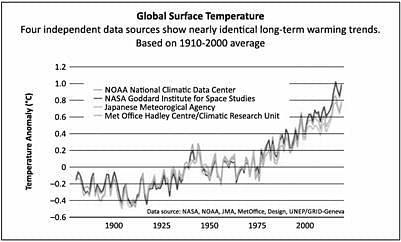
Choose the correct option to answer the questions based on the above passage and graphics.
Q. What do the reports confirm about the 2019-20 Australian fires?
Read the passage and answer the questions that follow:
Australia’s 2019-2020 Bushfire Season was not Normal
1. Data from satellite sources assembled by the United Nations Environment Programme’s (UNEP) World Environment Situation Room confirms that the wildfires in Australia in the last two months of 2019 and the first six weeks of 2020 were far from normal. 2019 was the second hottest year on record since 1880, and Australia recorded its warmest temperatures ever in December 2019.
2. “Rising temperatures continue to melt records. The past decade was the hottest on record. Scientists tell us that ocean temperatures are now rising at the equivalent of five Hiroshima bombs a second. One million species are in near-term danger of extinction. Our planet is burning,” says United Nations Secretary-General António Guterres.
3. “The trend is very clear: 37 of the last 40 years were the warmest recorded since 1880, and the six warmest years recorded were the last six years,” says Pascal Peduzzi, Director of UNEP’s Global Resource Information Database in Geneva. “For those who think Australia is always burning, graphs clearly show that these fires were exceptional.”
4. “This service, accessible via the UNEP’s World Environment Situation Room, is provided for all countries at national and provincial levels. It identifies trends in wildfire activity since 2003, when the data first became available and monitoring began. We have sliced and diced the satellite-based data on wildfires worldwide from 2009 to the present day. We analyse the wildfires’ data by month, type of land cover, protected area, province and nation to produce information products,” Peduzzi adds.
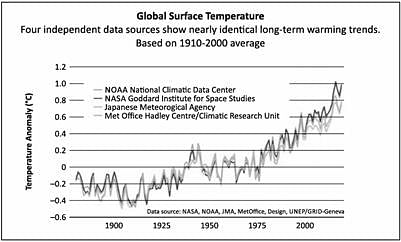
Choose the correct option to answer the questions based on the above passage and graphics.
Q. What was the difference in the recorded temperatures in 2019 from the 1880s?
Read the passage and answer the questions that follow:
Australia’s 2019-2020 Bushfire Season was not Normal
1. Data from satellite sources assembled by the United Nations Environment Programme’s (UNEP) World Environment Situation Room confirms that the wildfires in Australia in the last two months of 2019 and the first six weeks of 2020 were far from normal. 2019 was the second hottest year on record since 1880, and Australia recorded its warmest temperatures ever in December 2019.
2. “Rising temperatures continue to melt records. The past decade was the hottest on record. Scientists tell us that ocean temperatures are now rising at the equivalent of five Hiroshima bombs a second. One million species are in near-term danger of extinction. Our planet is burning,” says United Nations Secretary-General António Guterres.
3. “The trend is very clear: 37 of the last 40 years were the warmest recorded since 1880, and the six warmest years recorded were the last six years,” says Pascal Peduzzi, Director of UNEP’s Global Resource Information Database in Geneva. “For those who think Australia is always burning, graphs clearly show that these fires were exceptional.”
4. “This service, accessible via the UNEP’s World Environment Situation Room, is provided for all countries at national and provincial levels. It identifies trends in wildfire activity since 2003, when the data first became available and monitoring began. We have sliced and diced the satellite-based data on wildfires worldwide from 2009 to the present day. We analyse the wildfires’ data by month, type of land cover, protected area, province and nation to produce information products,” Peduzzi adds.
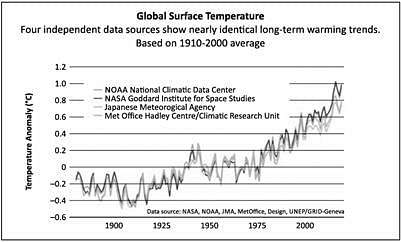
Choose the correct option to answer the questions based on the above passage and graphics.
Q. What comparison has been made between the rising sea temperatures and Hiroshima?
Read the passage and answer the questions that follow:
Australia’s 2019-2020 Bushfire Season was not Normal
1. Data from satellite sources assembled by the United Nations Environment Programme’s (UNEP) World Environment Situation Room confirms that the wildfires in Australia in the last two months of 2019 and the first six weeks of 2020 were far from normal. 2019 was the second hottest year on record since 1880, and Australia recorded its warmest temperatures ever in December 2019.
2. “Rising temperatures continue to melt records. The past decade was the hottest on record. Scientists tell us that ocean temperatures are now rising at the equivalent of five Hiroshima bombs a second. One million species are in near-term danger of extinction. Our planet is burning,” says United Nations Secretary-General António Guterres.
3. “The trend is very clear: 37 of the last 40 years were the warmest recorded since 1880, and the six warmest years recorded were the last six years,” says Pascal Peduzzi, Director of UNEP’s Global Resource Information Database in Geneva. “For those who think Australia is always burning, graphs clearly show that these fires were exceptional.”
4. “This service, accessible via the UNEP’s World Environment Situation Room, is provided for all countries at national and provincial levels. It identifies trends in wildfire activity since 2003, when the data first became available and monitoring began. We have sliced and diced the satellite-based data on wildfires worldwide from 2009 to the present day. We analyse the wildfires’ data by month, type of land cover, protected area, province and nation to produce information products,” Peduzzi adds.
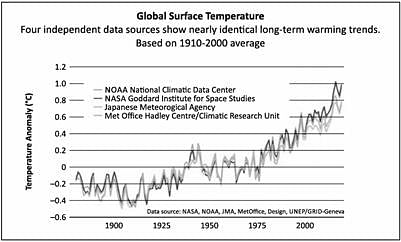
Choose the correct option to answer the questions based on the above passage and graphics.
Q. Choose the option that lists the CORRE CT answers for the following:
1. “Rising temperatures continue to melt records. The past decade was the hottest on record. Scientists tell us that ocean temperatures are now rising at the equivalent of five Hiroshima bombs a second”. Whose statement is this?
2. “The trend is very clear: 37 of the last 40 years were the warmest recorded since 1880, and the six warmest years recorded were the last six years.” Whose statement is this?
Read the passage and answer the questions that follow:
Australia’s 2019-2020 Bushfire Season was not Normal
1. Data from satellite sources assembled by the United Nations Environment Programme’s (UNEP) World Environment Situation Room confirms that the wildfires in Australia in the last two months of 2019 and the first six weeks of 2020 were far from normal. 2019 was the second hottest year on record since 1880, and Australia recorded its warmest temperatures ever in December 2019.
2. “Rising temperatures continue to melt records. The past decade was the hottest on record. Scientists tell us that ocean temperatures are now rising at the equivalent of five Hiroshima bombs a second. One million species are in near-term danger of extinction. Our planet is burning,” says United Nations Secretary-General António Guterres.
3. “The trend is very clear: 37 of the last 40 years were the warmest recorded since 1880, and the six warmest years recorded were the last six years,” says Pascal Peduzzi, Director of UNEP’s Global Resource Information Database in Geneva. “For those who think Australia is always burning, graphs clearly show that these fires were exceptional.”
4. “This service, accessible via the UNEP’s World Environment Situation Room, is provided for all countries at national and provincial levels. It identifies trends in wildfire activity since 2003, when the data first became available and monitoring began. We have sliced and diced the satellite-based data on wildfires worldwide from 2009 to the present day. We analyse the wildfires’ data by month, type of land cover, protected area, province and nation to produce information products,” Peduzzi adds.
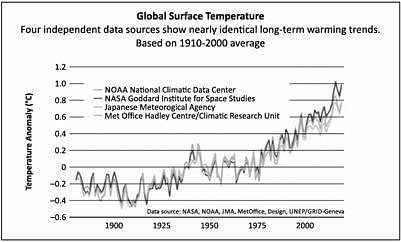
Choose the correct option to answer the questions based on the above passage and graphics.
Q. Based on your understanding of the passage, choose the option that lists the inherent qualities of climate in the present times.
1. Temperatures are rising.
2. Rising temperatures are temporary.
3. Rising temperatures melt records.
4. Climate change can be taken into control.
5. Oceans are rising.
6. Temperatures are decreasing.
Read the passage and answer the questions that follow:
Australia’s 2019-2020 Bushfire Season was not Normal
1. Data from satellite sources assembled by the United Nations Environment Programme’s (UNEP) World Environment Situation Room confirms that the wildfires in Australia in the last two months of 2019 and the first six weeks of 2020 were far from normal. 2019 was the second hottest year on record since 1880, and Australia recorded its warmest temperatures ever in December 2019.
2. “Rising temperatures continue to melt records. The past decade was the hottest on record. Scientists tell us that ocean temperatures are now rising at the equivalent of five Hiroshima bombs a second. One million species are in near-term danger of extinction. Our planet is burning,” says United Nations Secretary-General António Guterres.
3. “The trend is very clear: 37 of the last 40 years were the warmest recorded since 1880, and the six warmest years recorded were the last six years,” says Pascal Peduzzi, Director of UNEP’s Global Resource Information Database in Geneva. “For those who think Australia is always burning, graphs clearly show that these fires were exceptional.”
4. “This service, accessible via the UNEP’s World Environment Situation Room, is provided for all countries at national and provincial levels. It identifies trends in wildfire activity since 2003, when the data first became available and monitoring began. We have sliced and diced the satellite-based data on wildfires worldwide from 2009 to the present day. We analyse the wildfires’ data by month, type of land cover, protected area, province and nation to produce information products,” Peduzzi adds.
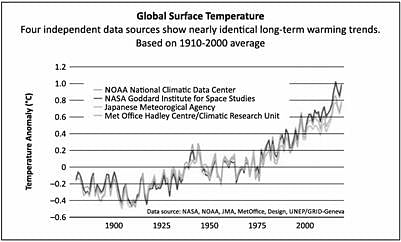
Choose the correct option to answer the questions based on the above passage and graphics.
Q. Which of the following independent data source is NOT PRESENT in the given graph?
Read the passage and answer the questions that follow:
Australia’s 2019-2020 Bushfire Season was not Normal
1. Data from satellite sources assembled by the United Nations Environment Programme’s (UNEP) World Environment Situation Room confirms that the wildfires in Australia in the last two months of 2019 and the first six weeks of 2020 were far from normal. 2019 was the second hottest year on record since 1880, and Australia recorded its warmest temperatures ever in December 2019.
2. “Rising temperatures continue to melt records. The past decade was the hottest on record. Scientists tell us that ocean temperatures are now rising at the equivalent of five Hiroshima bombs a second. One million species are in near-term danger of extinction. Our planet is burning,” says United Nations Secretary-General António Guterres.
3. “The trend is very clear: 37 of the last 40 years were the warmest recorded since 1880, and the six warmest years recorded were the last six years,” says Pascal Peduzzi, Director of UNEP’s Global Resource Information Database in Geneva. “For those who think Australia is always burning, graphs clearly show that these fires were exceptional.”
4. “This service, accessible via the UNEP’s World Environment Situation Room, is provided for all countries at national and provincial levels. It identifies trends in wildfire activity since 2003, when the data first became available and monitoring began. We have sliced and diced the satellite-based data on wildfires worldwide from 2009 to the present day. We analyse the wildfires’ data by month, type of land cover, protected area, province and nation to produce information products,” Peduzzi adds.
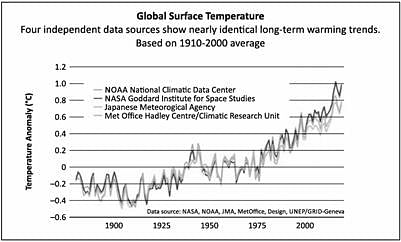
Choose the correct option to answer the questions based on the above passage and graphics.
Q. Choose the option that lists the CORRE CT statement.
Read the passage and answer the questions that follow:
Australia’s 2019-2020 Bushfire Season was not Normal
1. Data from satellite sources assembled by the United Nations Environment Programme’s (UNEP) World Environment Situation Room confirms that the wildfires in Australia in the last two months of 2019 and the first six weeks of 2020 were far from normal. 2019 was the second hottest year on record since 1880, and Australia recorded its warmest temperatures ever in December 2019.
2. “Rising temperatures continue to melt records. The past decade was the hottest on record. Scientists tell us that ocean temperatures are now rising at the equivalent of five Hiroshima bombs a second. One million species are in near-term danger of extinction. Our planet is burning,” says United Nations Secretary-General António Guterres.
3. “The trend is very clear: 37 of the last 40 years were the warmest recorded since 1880, and the six warmest years recorded were the last six years,” says Pascal Peduzzi, Director of UNEP’s Global Resource Information Database in Geneva. “For those who think Australia is always burning, graphs clearly show that these fires were exceptional.”
4. “This service, accessible via the UNEP’s World Environment Situation Room, is provided for all countries at national and provincial levels. It identifies trends in wildfire activity since 2003, when the data first became available and monitoring began. We have sliced and diced the satellite-based data on wildfires worldwide from 2009 to the present day. We analyse the wildfires’ data by month, type of land cover, protected area, province and nation to produce information products,” Peduzzi adds.
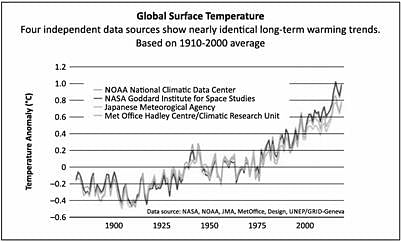
Choose the correct option to answer the questions based on the above passage and graphics.
Q. How can you say that the UN is concerned about the rising numbers of coal plants?
Read the passage and answer the questions that follow:
Australia’s 2019-2020 Bushfire Season was not Normal
1. Data from satellite sources assembled by the United Nations Environment Programme’s (UNEP) World Environment Situation Room confirms that the wildfires in Australia in the last two months of 2019 and the first six weeks of 2020 were far from normal. 2019 was the second hottest year on record since 1880, and Australia recorded its warmest temperatures ever in December 2019.
2. “Rising temperatures continue to melt records. The past decade was the hottest on record. Scientists tell us that ocean temperatures are now rising at the equivalent of five Hiroshima bombs a second. One million species are in near-term danger of extinction. Our planet is burning,” says United Nations Secretary-General António Guterres.
3. “The trend is very clear: 37 of the last 40 years were the warmest recorded since 1880, and the six warmest years recorded were the last six years,” says Pascal Peduzzi, Director of UNEP’s Global Resource Information Database in Geneva. “For those who think Australia is always burning, graphs clearly show that these fires were exceptional.”
4. “This service, accessible via the UNEP’s World Environment Situation Room, is provided for all countries at national and provincial levels. It identifies trends in wildfire activity since 2003, when the data first became available and monitoring began. We have sliced and diced the satellite-based data on wildfires worldwide from 2009 to the present day. We analyse the wildfires’ data by month, type of land cover, protected area, province and nation to produce information products,” Peduzzi adds.
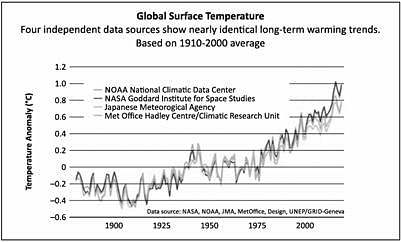
Choose the correct option to answer the questions based on the above passage and graphics.
Q. UNEP’s World Environment Situation Room has been tracking the world temperatures since ________.
Read the passage and answer the questions that follow:
Australia’s 2019-2020 Bushfire Season was not Normal
1. Data from satellite sources assembled by the United Nations Environment Programme’s (UNEP) World Environment Situation Room confirms that the wildfires in Australia in the last two months of 2019 and the first six weeks of 2020 were far from normal. 2019 was the second hottest year on record since 1880, and Australia recorded its warmest temperatures ever in December 2019.
2. “Rising temperatures continue to melt records. The past decade was the hottest on record. Scientists tell us that ocean temperatures are now rising at the equivalent of five Hiroshima bombs a second. One million species are in near-term danger of extinction. Our planet is burning,” says United Nations Secretary-General António Guterres.
3. “The trend is very clear: 37 of the last 40 years were the warmest recorded since 1880, and the six warmest years recorded were the last six years,” says Pascal Peduzzi, Director of UNEP’s Global Resource Information Database in Geneva. “For those who think Australia is always burning, graphs clearly show that these fires were exceptional.”
4. “This service, accessible via the UNEP’s World Environment Situation Room, is provided for all countries at national and provincial levels. It identifies trends in wildfire activity since 2003, when the data first became available and monitoring began. We have sliced and diced the satellite-based data on wildfires worldwide from 2009 to the present day. We analyse the wildfires’ data by month, type of land cover, protected area, province and nation to produce information products,” Peduzzi adds.
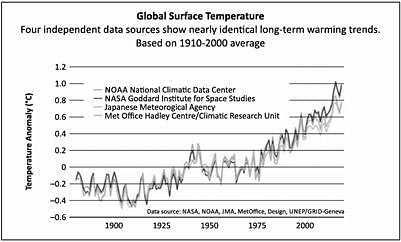
Choose the correct option to answer the questions based on the above passage and graphics.
Q. The graph compiled with data from four different sources shows that the global surface temperatures have been _________.
Read the passage and answer the questions that follow:
Australia’s 2019-2020 Bushfire Season was not Normal
1. Data from satellite sources assembled by the United Nations Environment Programme’s (UNEP) World Environment Situation Room confirms that the wildfires in Australia in the last two months of 2019 and the first six weeks of 2020 were far from normal. 2019 was the second hottest year on record since 1880, and Australia recorded its warmest temperatures ever in December 2019.
2. “Rising temperatures continue to melt records. The past decade was the hottest on record. Scientists tell us that ocean temperatures are now rising at the equivalent of five Hiroshima bombs a second. One million species are in near-term danger of extinction. Our planet is burning,” says United Nations Secretary-General António Guterres.
3. “The trend is very clear: 37 of the last 40 years were the warmest recorded since 1880, and the six warmest years recorded were the last six years,” says Pascal Peduzzi, Director of UNEP’s Global Resource Information Database in Geneva. “For those who think Australia is always burning, graphs clearly show that these fires were exceptional.”
4. “This service, accessible via the UNEP’s World Environment Situation Room, is provided for all countries at national and provincial levels. It identifies trends in wildfire activity since 2003, when the data first became available and monitoring began. We have sliced and diced the satellite-based data on wildfires worldwide from 2009 to the present day. We analyse the wildfires’ data by month, type of land cover, protected area, province and nation to produce information products,” Peduzzi adds.
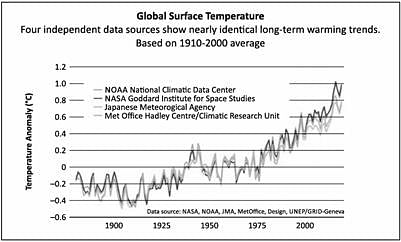
Choose the correct option to answer the questions based on the above passage and graphics.
Q. Which word in the passage means the same as “collect”?
Read the passage and answer the questions that follow:
Australia’s 2019-2020 Bushfire Season was not Normal
1. Data from satellite sources assembled by the United Nations Environment Programme’s (UNEP) World Environment Situation Room confirms that the wildfires in Australia in the last two months of 2019 and the first six weeks of 2020 were far from normal. 2019 was the second hottest year on record since 1880, and Australia recorded its warmest temperatures ever in December 2019.
2. “Rising temperatures continue to melt records. The past decade was the hottest on record. Scientists tell us that ocean temperatures are now rising at the equivalent of five Hiroshima bombs a second. One million species are in near-term danger of extinction. Our planet is burning,” says United Nations Secretary-General António Guterres.
3. “The trend is very clear: 37 of the last 40 years were the warmest recorded since 1880, and the six warmest years recorded were the last six years,” says Pascal Peduzzi, Director of UNEP’s Global Resource Information Database in Geneva. “For those who think Australia is always burning, graphs clearly show that these fires were exceptional.”
4. “This service, accessible via the UNEP’s World Environment Situation Room, is provided for all countries at national and provincial levels. It identifies trends in wildfire activity since 2003, when the data first became available and monitoring began. We have sliced and diced the satellite-based data on wildfires worldwide from 2009 to the present day. We analyse the wildfires’ data by month, type of land cover, protected area, province and nation to produce information products,” Peduzzi adds.
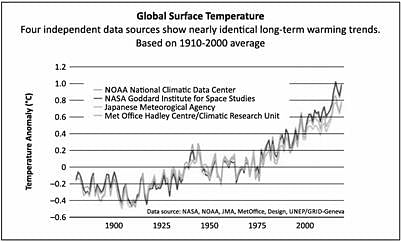
Choose the correct option to answer the questions based on the above passage and graphics.
Q. Which word in the passage is opposite to the meaning of ‘vague/murky’?
Read the given passage carefully:
1. On the last Sunday of November, among the ruins of the Phra Prang Sam Yot temple in Lopburi, Thailand, a bountiful banquet awaits the guests of honour, none of whom are humans. This feast is held in celebration of Lopburi’s thousands of macaques, thought to bring good luck to the area and its people.
2. Located 93 miles away from Bangkok, archaeological evidence confirms that Lopburi has been continuously inhabited for at least 3,000 years—this makes it one of the oldest and most historic cities in Thailand. Due to a millennia-worth of human habitation, the city boasts countless ancient sites dating from a variety of civilisations and dynasties.
3. From what began in 1989 by hotelier Yongyuth Kitwattananusont, the Monkey Buffet Festival was launched with the help of the Tourism Authority of Thailand. Over the years, the festival has expanded to include a large number of primates. In turn, it has seen an increase in the number of visitors who attend this unique event.
4. In the week leading up to the festival, locals pass out “invitations” to the monkeys with cashews attached to them as a small incentive. But, Lopburi’s residents don’t stop there when it comes to rolling out the red carpet for their furry neighbours.
5. The Monkey Buffet Festival kicks off with an opening ceremony that includes performances by dancers in monkey costumes. When the monkeys arrive, hosts remove sheets from the banquet tables, revealing decorative spreads of vibrantly hued fruits and vegetables. The macaques jump across tables and climb towering pyramids of watermelon, durian, lettuce, pineapple and more, indulging in the nearly two tons of offerings.
6. Respect for monkeys traces back at least 2,000 years to the epic tale of Rama, a divine prince, and his struggle to rescue his wife, Sita, from the clutches of a demon lord. According to the tale, the monkey king Hanuman and his army helped rescue Sita. Since that time, monkeys have been appreciated as a sign of good luck and prosperity. Lopburi’s annual buffet is one way people mark their appreciation.
On the basis of your reading of the passage given above, answer of the following questions:
Q. The monkey buffest festival is celebrated to :
Read the given passage carefully:
1. On the last Sunday of November, among the ruins of the Phra Prang Sam Yot temple in Lopburi, Thailand, a bountiful banquet awaits the guests of honour, none of whom are humans. This feast is held in celebration of Lopburi’s thousands of macaques, thought to bring good luck to the area and its people.
2. Located 93 miles away from Bangkok, archaeological evidence confirms that Lopburi has been continuously inhabited for at least 3,000 years—this makes it one of the oldest and most historic cities in Thailand. Due to a millennia-worth of human habitation, the city boasts countless ancient sites dating from a variety of civilisations and dynasties.
3. From what began in 1989 by hotelier Yongyuth Kitwattananusont, the Monkey Buffet Festival was launched with the help of the Tourism Authority of Thailand. Over the years, the festival has expanded to include a large number of primates. In turn, it has seen an increase in the number of visitors who attend this unique event.
4. In the week leading up to the festival, locals pass out “invitations” to the monkeys with cashews attached to them as a small incentive. But, Lopburi’s residents don’t stop there when it comes to rolling out the red carpet for their furry neighbours.
5. The Monkey Buffet Festival kicks off with an opening ceremony that includes performances by dancers in monkey costumes. When the monkeys arrive, hosts remove sheets from the banquet tables, revealing decorative spreads of vibrantly hued fruits and vegetables. The macaques jump across tables and climb towering pyramids of watermelon, durian, lettuce, pineapple and more, indulging in the nearly two tons of offerings.
6. Respect for monkeys traces back at least 2,000 years to the epic tale of Rama, a divine prince, and his struggle to rescue his wife, Sita, from the clutches of a demon lord. According to the tale, the monkey king Hanuman and his army helped rescue Sita. Since that time, monkeys have been appreciated as a sign of good luck and prosperity. Lopburi’s annual buffet is one way people mark their appreciation.
On the basis of your reading of the passage given above, answer of the following questions:
Q. Choose the option that best captures the central idea of the passage from the given quotes.
1. “Appreciation is the highest form of prayer, for it acknowledges the presence of good wherever you shine the light of your thankful thoughts.” — Alan Cohen
2. “Be thankful for what you have and you’ll end up having more.” — Oprah Winfrey
3. “You won’t be happy with more until you’re happy with what you’ve got.” —Viki King
4. “We should all be thankful for those people who rekindle the inner spirit.” — Albert Schweitzer
Read the given passage carefully:
1. On the last Sunday of November, among the ruins of the Phra Prang Sam Yot temple in Lopburi, Thailand, a bountiful banquet awaits the guests of honour, none of whom are humans. This feast is held in celebration of Lopburi’s thousands of macaques, thought to bring good luck to the area and its people.
2. Located 93 miles away from Bangkok, archaeological evidence confirms that Lopburi has been continuously inhabited for at least 3,000 years—this makes it one of the oldest and most historic cities in Thailand. Due to a millennia-worth of human habitation, the city boasts countless ancient sites dating from a variety of civilisations and dynasties.
3. From what began in 1989 by hotelier Yongyuth Kitwattananusont, the Monkey Buffet Festival was launched with the help of the Tourism Authority of Thailand. Over the years, the festival has expanded to include a large number of primates. In turn, it has seen an increase in the number of visitors who attend this unique event.
4. In the week leading up to the festival, locals pass out “invitations” to the monkeys with cashews attached to them as a small incentive. But, Lopburi’s residents don’t stop there when it comes to rolling out the red carpet for their furry neighbours.
5. The Monkey Buffet Festival kicks off with an opening ceremony that includes performances by dancers in monkey costumes. When the monkeys arrive, hosts remove sheets from the banquet tables, revealing decorative spreads of vibrantly hued fruits and vegetables. The macaques jump across tables and climb towering pyramids of watermelon, durian, lettuce, pineapple and more, indulging in the nearly two tons of offerings.
6. Respect for monkeys traces back at least 2,000 years to the epic tale of Rama, a divine prince, and his struggle to rescue his wife, Sita, from the clutches of a demon lord. According to the tale, the monkey king Hanuman and his army helped rescue Sita. Since that time, monkeys have been appreciated as a sign of good luck and prosperity. Lopburi’s annual buffet is one way people mark their appreciation.
On the basis of your reading of the passage given above, answer of the following questions:
Q. The traditional monkey buffet festival holds relevance from:
Read the given passage carefully:
1. On the last Sunday of November, among the ruins of the Phra Prang Sam Yot temple in Lopburi, Thailand, a bountiful banquet awaits the guests of honour, none of whom are humans. This feast is held in celebration of Lopburi’s thousands of macaques, thought to bring good luck to the area and its people.
2. Located 93 miles away from Bangkok, archaeological evidence confirms that Lopburi has been continuously inhabited for at least 3,000 years—this makes it one of the oldest and most historic cities in Thailand. Due to a millennia-worth of human habitation, the city boasts countless ancient sites dating from a variety of civilisations and dynasties.
3. From what began in 1989 by hotelier Yongyuth Kitwattananusont, the Monkey Buffet Festival was launched with the help of the Tourism Authority of Thailand. Over the years, the festival has expanded to include a large number of primates. In turn, it has seen an increase in the number of visitors who attend this unique event.
4. In the week leading up to the festival, locals pass out “invitations” to the monkeys with cashews attached to them as a small incentive. But, Lopburi’s residents don’t stop there when it comes to rolling out the red carpet for their furry neighbours.
5. The Monkey Buffet Festival kicks off with an opening ceremony that includes performances by dancers in monkey costumes. When the monkeys arrive, hosts remove sheets from the banquet tables, revealing decorative spreads of vibrantly hued fruits and vegetables. The macaques jump across tables and climb towering pyramids of watermelon, durian, lettuce, pineapple and more, indulging in the nearly two tons of offerings.
6. Respect for monkeys traces back at least 2,000 years to the epic tale of Rama, a divine prince, and his struggle to rescue his wife, Sita, from the clutches of a demon lord. According to the tale, the monkey king Hanuman and his army helped rescue Sita. Since that time, monkeys have been appreciated as a sign of good luck and prosperity. Lopburi’s annual buffet is one way people mark their appreciation.
On the basis of your reading of the passage given above, answer of the following questions:
Q. Lopburi, Thailand is famous:
Read the given passage carefully:
1. On the last Sunday of November, among the ruins of the Phra Prang Sam Yot temple in Lopburi, Thailand, a bountiful banquet awaits the guests of honour, none of whom are humans. This feast is held in celebration of Lopburi’s thousands of macaques, thought to bring good luck to the area and its people.
2. Located 93 miles away from Bangkok, archaeological evidence confirms that Lopburi has been continuously inhabited for at least 3,000 years—this makes it one of the oldest and most historic cities in Thailand. Due to a millennia-worth of human habitation, the city boasts countless ancient sites dating from a variety of civilisations and dynasties.
3. From what began in 1989 by hotelier Yongyuth Kitwattananusont, the Monkey Buffet Festival was launched with the help of the Tourism Authority of Thailand. Over the years, the festival has expanded to include a large number of primates. In turn, it has seen an increase in the number of visitors who attend this unique event.
4. In the week leading up to the festival, locals pass out “invitations” to the monkeys with cashews attached to them as a small incentive. But, Lopburi’s residents don’t stop there when it comes to rolling out the red carpet for their furry neighbours.
5. The Monkey Buffet Festival kicks off with an opening ceremony that includes performances by dancers in monkey costumes. When the monkeys arrive, hosts remove sheets from the banquet tables, revealing decorative spreads of vibrantly hued fruits and vegetables. The macaques jump across tables and climb towering pyramids of watermelon, durian, lettuce, pineapple and more, indulging in the nearly two tons of offerings.
6. Respect for monkeys traces back at least 2,000 years to the epic tale of Rama, a divine prince, and his struggle to rescue his wife, Sita, from the clutches of a demon lord. According to the tale, the monkey king Hanuman and his army helped rescue Sita. Since that time, monkeys have been appreciated as a sign of good luck and prosperity. Lopburi’s annual buffet is one way people mark their appreciation.
On the basis of your reading of the passage given above, answer of the following questions:
Q. The locals attach cashew to the invitations to:
Read the given passage carefully:
1. On the last Sunday of November, among the ruins of the Phra Prang Sam Yot temple in Lopburi, Thailand, a bountiful banquet awaits the guests of honour, none of whom are humans. This feast is held in celebration of Lopburi’s thousands of macaques, thought to bring good luck to the area and its people.
2. Located 93 miles away from Bangkok, archaeological evidence confirms that Lopburi has been continuously inhabited for at least 3,000 years—this makes it one of the oldest and most historic cities in Thailand. Due to a millennia-worth of human habitation, the city boasts countless ancient sites dating from a variety of civilisations and dynasties.
3. From what began in 1989 by hotelier Yongyuth Kitwattananusont, the Monkey Buffet Festival was launched with the help of the Tourism Authority of Thailand. Over the years, the festival has expanded to include a large number of primates. In turn, it has seen an increase in the number of visitors who attend this unique event.
4. In the week leading up to the festival, locals pass out “invitations” to the monkeys with cashews attached to them as a small incentive. But, Lopburi’s residents don’t stop there when it comes to rolling out the red carpet for their furry neighbours.
5. The Monkey Buffet Festival kicks off with an opening ceremony that includes performances by dancers in monkey costumes. When the monkeys arrive, hosts remove sheets from the banquet tables, revealing decorative spreads of vibrantly hued fruits and vegetables. The macaques jump across tables and climb towering pyramids of watermelon, durian, lettuce, pineapple and more, indulging in the nearly two tons of offerings.
6. Respect for monkeys traces back at least 2,000 years to the epic tale of Rama, a divine prince, and his struggle to rescue his wife, Sita, from the clutches of a demon lord. According to the tale, the monkey king Hanuman and his army helped rescue Sita. Since that time, monkeys have been appreciated as a sign of good luck and prosperity. Lopburi’s annual buffet is one way people mark their appreciation.
On the basis of your reading of the passage given above, answer of the following questions:
Q. The residents of Lopburi make the buffet special by:
|
45 videos|149 docs|39 tests
|
|
45 videos|149 docs|39 tests
|

















